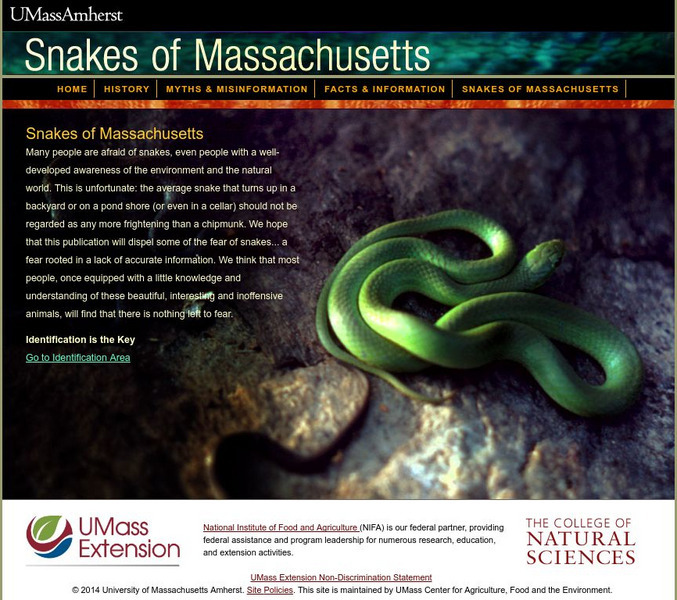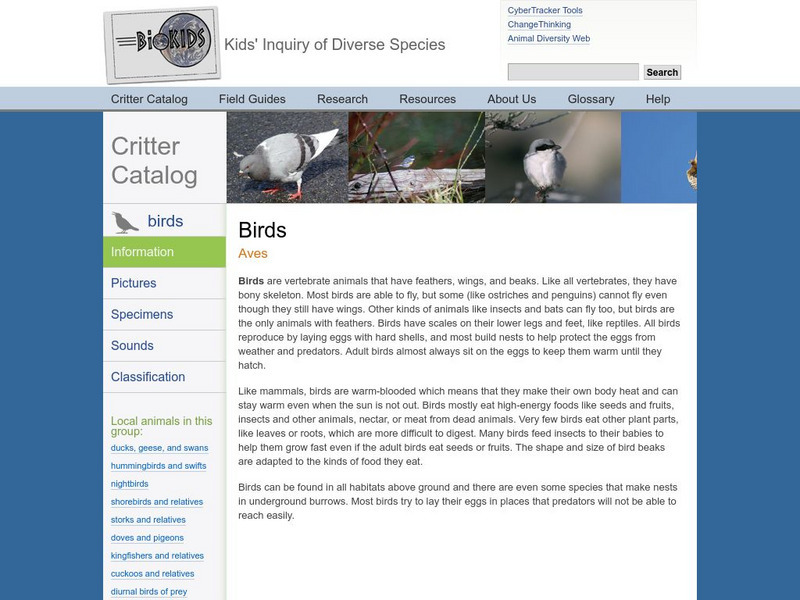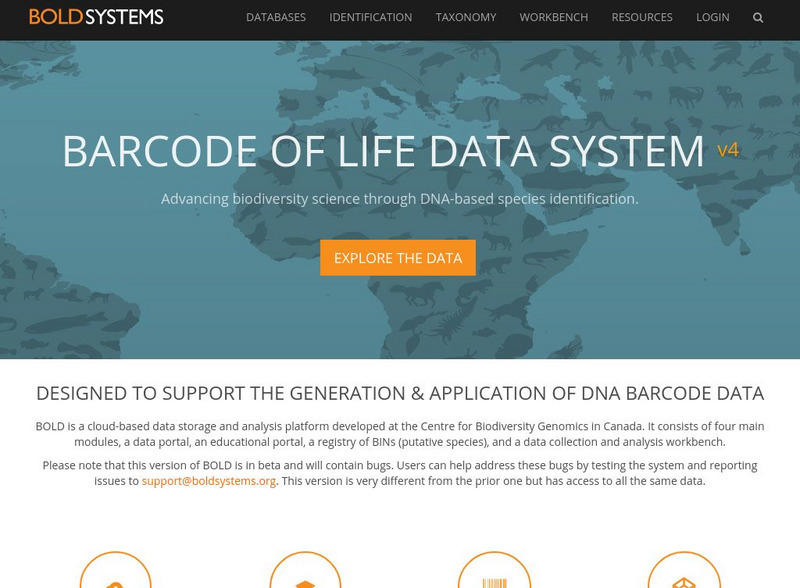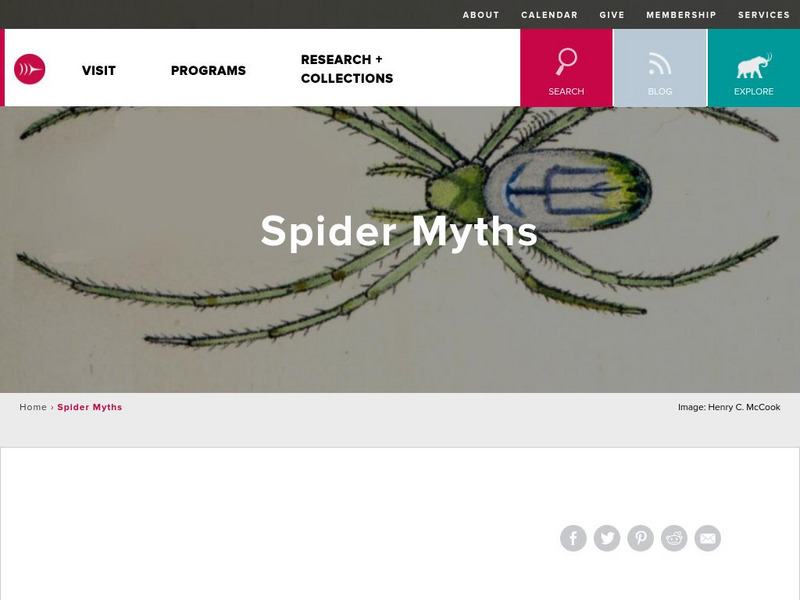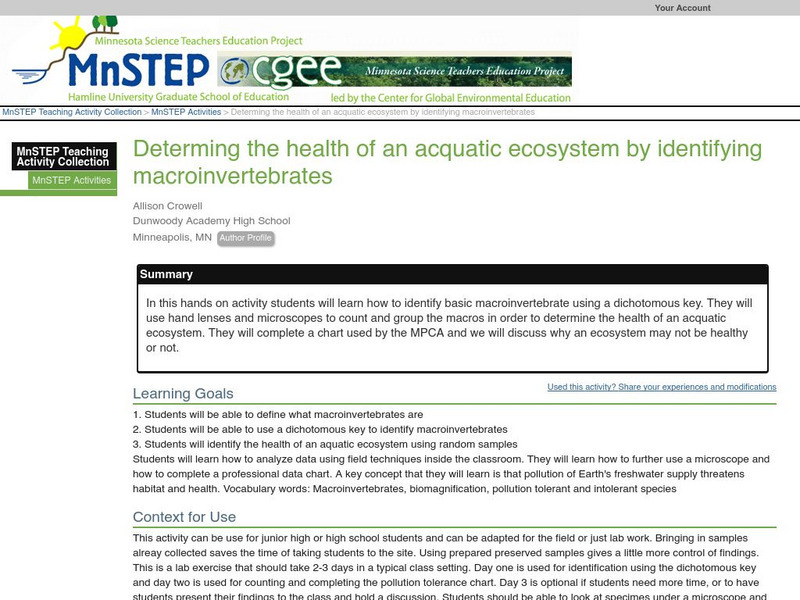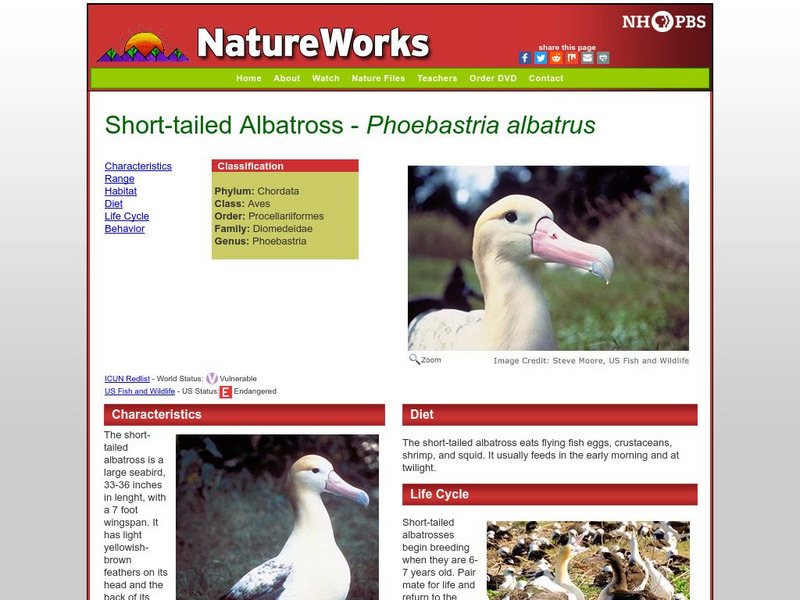Other
Virginia Department of Game & Inland Fisheries: Snakehead Identification
This site provides an interesting comparison of the snakehead to the bowfin, American eel, and sea lamprey. Pictures and facts are presented in an easily readable manner. Why should we care and what can you do are other topics explored.
Other
Canadian Centre for Dna Barcoding
The Canadian Centre for DNA Barcoding was started in 2003 by Dr. Paul Hebert. He came up with the idea of barcoding the DNA of all known species and creating a database to them. You can find a good explanation of what DNA barcoding is,...
Other
Ohio Public Library: What Tree Is It?
An online resource for tree identification by common name, scientific name, leaf, or fruit.
PBS
Pbs Teachers:denali: What Denali Animal Am I? Identifying the Animal Species Of
Identify the different mammal species of Denali National Park.
Burke Museum
Burke Museum: Spider Identification
As part of the Arachnology section of the Burke Museum, this site corrects false conceptions associated with identifying spiders.
Other
University of Massachusetts Amherst: Snakes of Massachusetts
This excellent online exhibit presents the major snakes of Massachusetts. It presents a brief history of snakes, looks at people's misconceptions of snakes, provides snake facts, and gives information on how to identify different species.
University of Michigan
University of Michigan, Critter Catalog: Birds
A very comprehensive website that defines birds in general and then examines the various species of birds found in southeast Michigan. Look up a specific bird and find a description, pictures, sound clips, and classification information.
Other
Barcode of Life Data Systems (Bold)
The Barcode of Life Data Systems is the depository of DNA barcode information and specimens. While there is not actually much here for teachers or students to use, it is interesting to read about the work and how much has been collected...
Other
Nature Canada: Nature Watch: Frog Watch
FrogWatch is a Canadian program that uses volunteers to record data about a variety of frog species across the country, and then submit their observations. Monitoring frogs provides valuable information about the health of ecosystems and...
Burke Museum
Burke Museum: Identifying House Spiders
From the Burke Museum's collection of Arachnology comes this site which seeks to correct misconceptions associated with the identification of house spiders.
Science Education Resource Center at Carleton College
Serc: Identifying Macroinvertebrates to Determine Health of Aquatic Ecosystem
In this hands on activity students will learn how to identify basic macroinvertebrate using a dichotomous key. They will complete a chart used by the MPCA and we will discuss why an ecosystem may not be healthy or not.
Other
Southwest Tennessee Community College: Classification of Organisms
College-level instructor's notes describing taxonomy. Explanations and images give a chronological history of the science of classifying organisms.
PBS
Nh Pbs: Nature Works: Short Tailed Albatross
What makes a Short-tailed Albatross unique? Learn more about this fascinating aquatic bird through this resource. The site features information ranging from characteristics and behavior to life cycle and diet.
University of Michigan
University of Michigan Critter Catalog: Insects
A thorough site that provides a description of the characteristics of insects and then focuses on the insects of southeastern Michigan. Pictures, classification groupings, and sound clips of insects are included.
University of Nebraska
University of Nebraska State Museum: Pollen Detective: About Pollen
Twelve different species of plant pollen are highlighted in this engaging resource. For each plant you can view pollen as seen under two different kinds of microscopes. Reproductive cycles and physical traits used for identification are...
San Diego Zoo Global
San Diego Zoo: Birds
This resource provides detailed information about birds, as well as several pictures.





